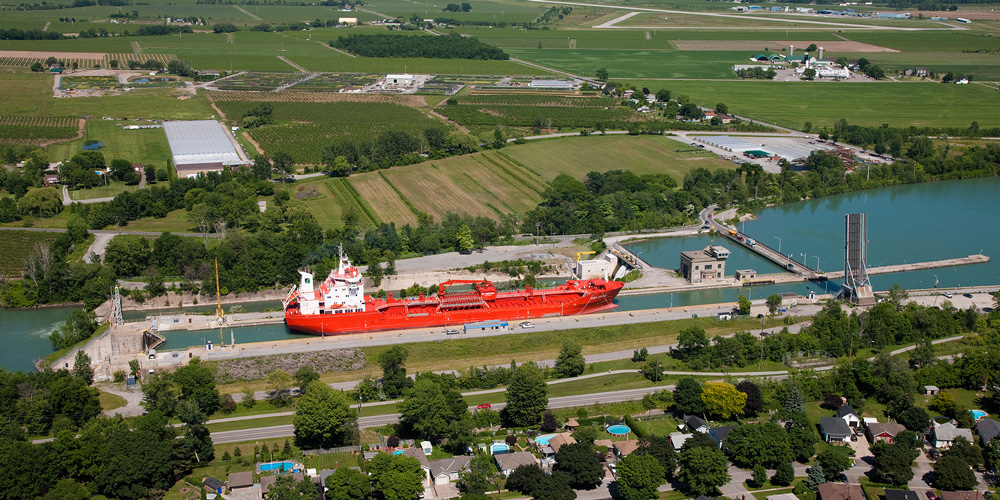Seaway 2002-2003 Annual Report Highlights New Business Plan
July 10, 2003
Cornwall, July 10, 2003 – Richard Corfe, new President and CEO of The St. Lawrence Seaway Management Corporation (SLSMC), announced today that the latest SLSMC annual report is now available on the binational Seaway Web site at www.greatlakes-seaway.com.
“It is my pleasure to report,” stated Mr. Corfe, “that for the fifth year in a row, The St. Lawrence Seaway Management Corporation has not only met but exceeded our business plan targets”. In addition to financial statements, the annual report includes summaries of Seaway traffic statistics, a review of major projects carried out over the past five years, and highlights of the Corporation’s new five-year business plan, which took effect April 1, 2003.
Under its agreement with Transport Canada, SLSMC operations are guided by a series of five-year business plans that set targets for revenues and manageable costs. Strong cost control by the Corporation has made toll rebates possible during the last two years. Although a soft North American economy and aggressive competition have recently cut into Seaway cargo traffic, a further 1% reduction was integrated into the tariff structure for 2003. Annual toll increases will be capped at 2% for the remaining 4 years of the new business plan. The new plan calls for an increase in revenues of 14% or $50 million over five years, with traffic expected to grow by about two million tonnes annually.
The SLSMC’s new business plan increases maintenance expenditures by some 36% over the next five years, to $170 million. Four Seaway Montreal and Beauharnois locks are affected by an alkali-aggregate reaction, which impacts the life expectancy of the structures. An engineering study focused on the rehabilitation of existing structures will be undertaken, with the goal of extending the life of the eastern section of the Seaway by a hundred years. In addition, mechanical lock drives across the system will be converted to modern hydraulic equipment. Hydraulic drives are expected to improve both the efficiency and safety of lock operations, and require less maintenance.
Given the SLSMC’s close attention to preventative maintenance and asset renewal, the Seaway enjoys an excellent reliability record, with system uptime exceeding 99.75% over the last two navigation seasons. However, there is no denying that the Seaway’s aging infrastructure is deteriorating despite the preventative maintenance program.
The SLSMC will continue to foster collaboration among stakeholders on both sides of the border. A key step forward in this process came in May with the announcement of the joint Canada / U.S. agreement to complete the Great Lakes / St. Lawrence Seaway System Review. The study will provide vital information on options to modernize the Seaway and should yield preliminary budget estimates for these options about halfway through the current five-year business plan, at which point the asset renewal budget will be revisited.
The long-term review, co-managed by Transport Canada and the U.S. Army Corps of Engineers, will encompass all pertinent issues including a thorough engineering study of the waterway’s infrastructure, a cost-benefit study, and environmental impact study. “I believe that it is essential for the marine industry to make widely known the environmental benefits of marine transportation,” notes SLSMC President and CEO Corfe. “A Seaway used to full capacity can both reduce greenhouse gas emissions and ease congestion on our highways, leading to fewer accidents and spills on heavily traveled roads.”
The 3,700 kilometre St. Lawrence Seaway allows uninterrupted navigation nine months of the year from the Atlantic Ocean to the western extremity of the Great Lakes at Duluth, Minnesota. This year, the Seaway is projected to carry over 40 million tonnes of cargo, ranging from raw materials feeding North America’s industrial heartland to a broad range of bulk commodities bound for markets around the world.






